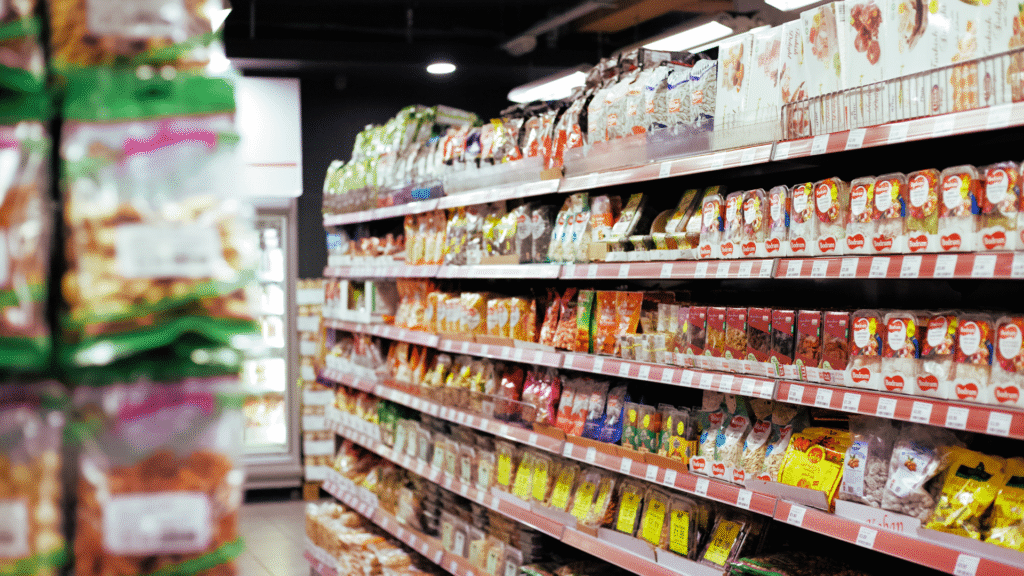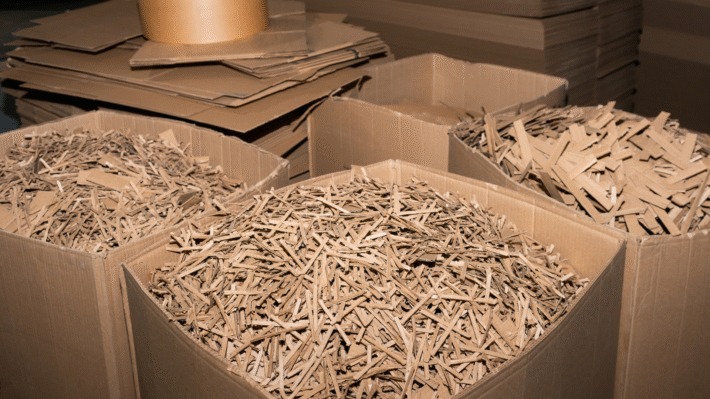Emerging Packaging Technologies Innovations for a Greener Tomorrow

The urgency of sustainable packaging is at an all-time high, as the world grapples with waste, pollution, and carbon emissions. Consumers and governments are pushing for change with initiatives like the EU Green Deal and Sustainable Development Goals (SDGs), compelling industries to rethink their environmental impact. But here’s the exciting part: technology is stepping in as a strong ally driving this transformation. From innovative materials to intelligent systems, cross-industry collaboration is paving the way for a greener future.
Imagine a world where biobased and biodegradable materials replace conventional plastics, where smart packaging informs us of a product’s freshness, and where advanced recycling technologies ensure minimal waste. These innovations are not just dreams but are fast becoming reality thanks to the relentless pursuit of sustainability.
Let’s dive into the fascinating world where technology meets sustainability, revolutionizing packaging one innovative step at a time!
Biobased & Biodegradable Materials
Plant-Based Polymers
PLA, PHA, and Starch Blends
PLA, PHA, and starch blends are taking the spotlight in the realm of sustainable packaging. Polylactic acid (PLA), derived mainly from fermented plant starch like corn, offers a compostable alternative to petroleum-based plastics. Known for its transparency and processability, PLA is widely used in bottles and food packaging. Meanwhile, polyhydroxyalkanoates (PHA) are gaining attention for their ability to degrade in marine environments, making them a potential game-changer for reducing ocean pollution. Starch blends, combining natural starch with other biodegradable materials, provide a cost-effective solution that maintains product integrity.
Performance and Application
The performance and application of these polymers are crucial for their widespread adoption. PLA is celebrated for its clarity and ability to mimic traditional plastics in terms of appearance, although it generally performs better in less demanding applications due to its lower heat resistance. PHA, on the other hand, excels in high-temperature environments but remains expensive to produce. Starch blends provide versatility and affordability, making them ideal for products like shopping bags and disposable cutlery. These materials, while promising, require continued innovation to enhance their durability and functionality for mass-market applications.
Agricultural Waste Utilization
Bagasse and Mycelium
Bagasse and mycelium are innovative materials that showcase the potential of agricultural waste. Bagasse, the fibrous residue from sugarcane after juice extraction, is repurposed into biodegradable containers, reducing reliance on tree-based paper products. Mycelium, the root structure of mushrooms, is utilized for its ability to form durable, eco-friendly packaging. It naturally decomposes after use, contributing to closed-loop systems that minimize waste. Both materials highlight creative solutions to resource optimization and waste reduction.
Hemp and Circular Sourcing
Hemp is a robust and resilient crop that plays a key role in circular sourcing. Its rapid growth and minimal need for pesticides make it a sustainable option for packaging materials. Hemp fibers are converted into various eco-friendly products such as paper, textiles, and bioplastic alternatives. By integrating agricultural by-products like hemp into packaging, companies can foster a circular economy that reuses resources rather than depleting them, significantly reducing environmental impact.
Edible Packaging Solutions
Seaweed and Gelatin Innovations
Seaweed and gelatin innovations are at the forefront of edible packaging solutions. Seaweed-derived films, such as those made by companies like Loliware, offer a plastic-free alternative that dissolves in water, appealing to consumers seeking zero-waste options. Gelatin, made from animal by-products, is used to create biodegradable films with potential applications in the food industry. These materials not only reduce plastic waste but also provide a unique way to enhance the consumer experience through edible packaging that can double as a novel culinary component.
Potential of Rice Paper
The potential of rice paper as an edible packaging material is being explored for its versatility and simplicity. Rice paper, long used in culinary applications, can be transformed into a coating or wrap for products, offering an eco-friendly alternative to plastics and foils. Its ability to biodegrade swiftly in the environment strengthens its appeal. As innovations continue, rice paper could play a significant role in the expansion of sustainable packaging solutions, particularly in markets focused on reducing waste and enhancing consumer engagement with environmentally friendly products.
Smart & Active Packaging
The world of packaging is experiencing a revolution. With increasing focus on enhancing consumer safety and reducing waste, smart and active packaging solutions have become essential in modern supply chains. This new frontier promises to not only improve the functionality of packaging but also to transform the way we interact with products.
Intelligent Labels and Sensors
Intelligent labels and sensors are leading the charge in smart packaging. They bring a level of intelligence and interaction previously unseen, offering real-time data to both consumers and producers.
Time-Temperature Monitoring
Time-temperature monitoring is crucial in industries like pharmaceuticals and food and beverages, where product integrity can be compromised by temperature fluctuations. These sensors constantly track temperature changes, sending alerts when conditions exceed safe thresholds. Such monitoring ensures that consumers receive products in optimal condition and reduces the risk of spoilage or contamination.
Freshness Indicators and IoT Tracking
Freshness indicators are a game-changer for perishable goods. They use color-changing or digital displays to provide an easy-to-read freshness status. Linked with IoT tracking, these indicators allow for detailed data collection, enabling producers to optimize logistics and manage inventory efficiently. This synergy ensures products remain fresh from the warehouse to the consumer’s home.
Antimicrobial Films
Antimicrobial films add an extra layer of protection by actively reducing microbial activity on packaging surfaces. This is particularly vital for food packaging, where contamination is a significant concern.
Natural Preservatives Application
Using natural preservatives in antimicrobial films leverages ingredients like essential oils and plant extracts. These films can extend the shelf-life of products without resorting to harsh chemicals. As consumers demand more natural and safe products, natural preservatives offer an attractive solution for companies looking to enhance their safety protocols while maintaining environmental stewardship.
Blockchain for Supply Chain
Blockchain technology introduces accountability and transparency into the complex world of global supply chains. This innovation provides secure and inalterable records of product journeys, from inception to delivery.
Enhancing Transparency
Transparency is becoming non-negotiable in today’s marketplace. Blockchain offers a level of transparency that allows consumers and producers alike to verify each stage of a product’s life cycle. By recording each transaction on a decentralized ledger, companies can prove that their products meet the necessary quality and ethical standards, building consumer trust.
Ensuring Authenticity
Authenticity is a major concern, especially for high-value goods and pharmaceuticals. Blockchain helps ensure that products are genuine and safe by validating their origins and movement through the supply chain. This is a significant deterrent against counterfeiting, giving consumers confidence in their purchases and protecting brand reputation.
In conclusion, smart and active packaging is transforming the landscape by integrating technological advancements that not only improve efficiency but also ensure safety and authenticity. It’s a fascinating era where packaging does more than just hold products—it communicates, protects, and presents unprecedented opportunities.
Material Innovation & Nanotech
Material innovation in packaging is transforming industries by using cutting-edge nanotechnology. Through the creation of nanocoatings, significant advancements have been made, addressing permeability issues and enhancing preservation effectiveness. With the rise of lightweighting techniques, material usage is reduced, leading to environmental benefits and cost savings. Moreover, the development of self-healing materials presents exciting possibilities for the future of reusable packaging.
Nanocoatings for Barrier Improvement
Nanocoatings have emerged as a revolutionary solution for improving barrier properties in packaging materials. These ultra-thin coatings, often measured in nanometers, are designed to provide superior protection against moisture, oxygen, and even light. Such enhancements are crucial for extending the shelf life of products, particularly perishable goods.
For instance, food packaging that utilizes nanocoatings can better maintain the freshness and quality of its contents. The effectiveness of nanocoatings is attributed to their ability to create a nearly impermeable layer, minimizing the passage of gases and external elements. As technological advancements continue, the viability and cost-effectiveness of these coatings are expected to improve, making them an integral part of sustainable packaging solutions.
Lightweighting Techniques
Reducing Material Use
Lightweighting techniques are gaining traction as industries seek to reduce material use in packaging. This involves utilizing advanced materials and innovative designs to create lighter products without compromising on strength or durability. By adopting lightweighting strategies, manufacturers can benefit from cost savings on materials and transportation, all while reducing their carbon footprint.
An essential aspect of lightweighting is optimizing the use of recycled and recyclable materials, further contributing to resource efficiency. Innovations in material science have enabled the creation of packaging that is not only light but also robust, ensuring product safety during transit and storage. Overall, lightweighting not only aids in environmental sustainability but also provides businesses with economic advantages by reducing shipping costs due to decreased load weight.
Self-Healing Materials
Future Reusable Packaging
The development of self-healing materials represents an exciting frontier in the packaging industry. These materials have the capacity to repair themselves after damage, thereby extending their useful life and promoting the concept of reusable packaging. Such innovations are poised to change the landscape of packaging, enabling containers and wraps that can last longer and withstand wear and tear without losing their integrity.
The application of self-healing materials could revolutionize sectors such as electronics packaging, where protecting sensitive components from damage is paramount. The potential for reducing waste is substantial, as self-healing capabilities mean that fewer materials would end up in landfills. As research in this area progresses, we foresee a future where self-healing materials will be a common feature in diverse packaging applications, making packaging not only smart but also sustainable.



